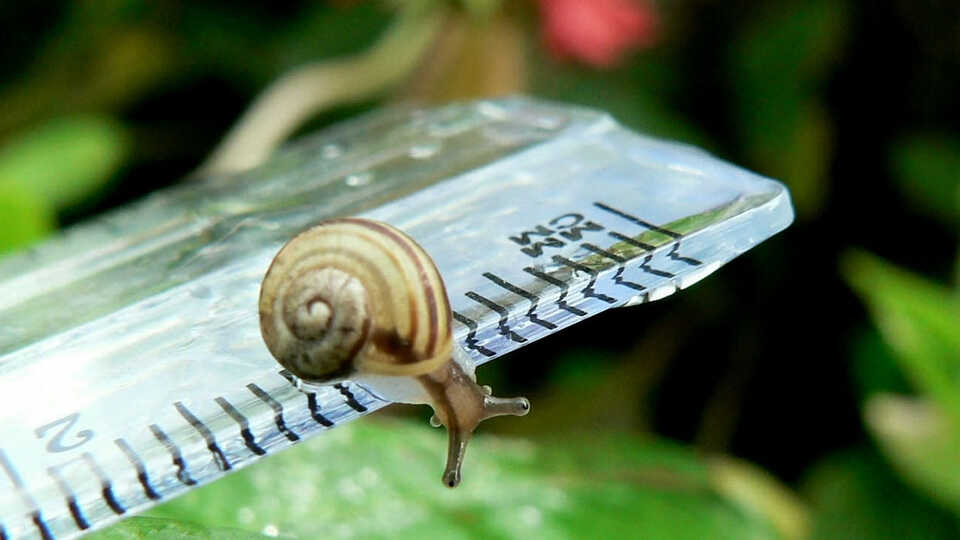In this lesson, students will:
- learn to make and interpret scale models.
- practice using the metric system for measurement.
- discover the relative sizes of various large plants and animals.

"He's too tiny to measure up." © 2006 Patty O'Hearn Kickham
Some organisms, like whales and redwood trees, are so large that it's hard for us to picture just how big they are! In this lesson, students practice mathematics and computational thinking to create scale models of themselves, and then apply these skills to create models of other large organisms. This activity works best when stretched out over three (or more) class periods.
In this lesson, students will:
Students will create scale models of themselves to use as a point of reference in the later activities. These can also be used to demonstrate the concept of relative size.
Students will create models of some of the largest animals currently living.
So far we have been focusing on large animals. In the final part of the activity, students will see how these animals compare to the largest plants in the world.
This activity focused specifically on species that are currently living. However, there are many other large things that are worthy of a scale model. For an additional classroom or homework assignment, have students research and make scale models of:
We frequently read or hear some impressive statistics about large organisms—for example, that blue whales can be up to 30 meters long, or that the Giant Sequoia can grow as tall as 80 meters. However, when students read facts like this, it can be difficult for them to visualize what those numbers actually mean. In fact, size and scale in general can be difficult for students to grasp, especially when working with units that they may not be completely familiar with. In this activity, students will practice using the metric system for measurement and get comfortable with the concept of scale models. In addition, after creating models of different organisms, students will be able to clearly visualize the sizes of some of the world’s largest living plants and animals.
While the question of “which animal is the largest?” may seem fairly simple, the answer is not always straightforward. Size can be measured in many ways, such as by length, by volume, or by mass, and the results may differ depending on which criteria are used. For example, one animal may be longer but have a smaller volume than a second animal. For the sake of consistency, we will use the same criterion throughout most of this activity: length. Because the students will be making two-dimensional models, this will be an easy measurement to work with.
In addition to hands-on experience with size and scale, students will also gain experience with simple research as they look up the necessary facts about the animal they are modeling. This is a good opportunity for your students to practice locating and recognizing reputable sources of information. (Try to steer them away from depending solely on Wikipedia and toward more reliable resources.)
Grade Six
Mathematics: Algebra and Functions
Grade Seven
Science: Investigation and Experimentation
Mathematics: Measurement and Geometry
Scientific and Engineering Practices
Cross-Concepts
Performance Expectations
Save the Redwoods League: Giant Sequoias. Retrieved on June 16, 2015.
Save the Redwood League: Coast Redwoods. Retrieved on June 16, 2015.
National Parks Service: The General Sherman Tree. Retrieved on June 16, 2015.
Humboldt County Convention and Visitors Bureau: Hyperion. Retrieved on June 16, 2015.
Image: "He's too tiny to measure up." by Patty O'Hearn Kickham, licensed and modified under CC BY 2.0; originally sourced from https://www.flickr.com/photos/memotions/259656126